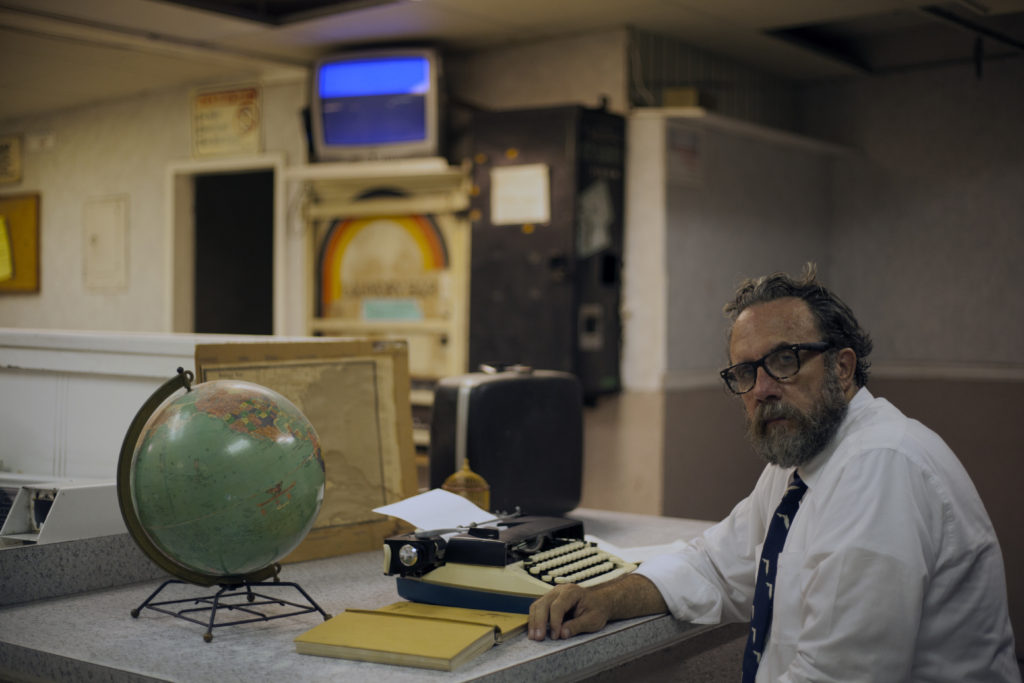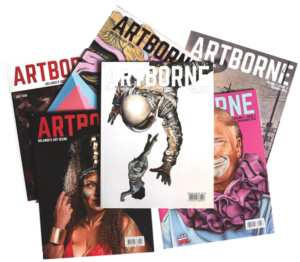Robert Smithson published Monuments of Passaic in Art Forum in ????1967. His essay included photos, featuring the town of Passaic, New Jersey (Smithson’s birthplace). The photos of Passaic captured the blight of the area, while presenting it as art. His title pays faux reverence to industrial structures, by referring to what was widely considered to be an eyesore as a monument. His written essay was part detached travelogue, and something resembling a scientific journal.
He seemed to be following the lead of Marcel Duchamp’s Readymades, who roughly fifty years before Passaic displayed a urinal, snow shovel, and a bicycle wheel as art, and stated that if the artist feels it’s art, it’s art (paraphrased). There are still plenty of conversations by educated and informed people in the art world asking whether different artists work is art or not. I doubt that these tedious conversations will ever go away.
Smithson is more well known for his Spiral Jetty, but the Passaic piece laid down the conceptual foundation for Spiral Jetty, and site specific work by other artists. He gave significance to a place that was generally considered to be undesirable. It was a continuation of Duchamp’s commentary on what art is, but Smithson extended the conversation to whether artists need galleries and museums. His belief was art can be anywhere.

Robert Smithson, Spiral Jetty 1970, precipitated salt crystals and rocks. Photo by Flickr user joevare
Of course I love art in a gallery, and museum. Full disclosure I run a gallery. Smithson’s point about galleries, and museums is valid, because he saw something beyond what was viewed as the standard. His standard didn’t replace the old, but now we know there is room for galleries and site specific work. Conventional galleries, and museums may be the preferred outlet for most artists, but many well known artists choose sites that work with specific projects.
Some of the more well known examples are the Christos and Banksy.
An English professor friend of mine uses Smithson’s essays in his English classes. Smithson’s writing may have given credence and lasting power to Land Artists. He was a great writer who gave clarity to his ideas. Interestingly Poet William Carlos Williams was his pediatrician. I would like to imagine that he too was an influence.
When I hear people express their frustration that they can’t get a show in a gallery or a museum often I’ll bring up Smithson and others who made their own rules..
The idea was that you can feed the world anything,
and they will bite if it’s presented right.
In the late ??90’s I was given a copy of Greil Marcus’s book Lipstick Traces. The book showed the parallels and connections between the Dada Movement, The Situationist International and Punk Rock. Until then, I had no idea that the Sex Pistols manager Malcolm McLaren was interested in the Situationists, a group of French intellectuals, philosophers, artists and wanderers. The situationists believed that the world had been reduced to a spectacle. Guy Debord a leader of the group wrote an intentionally fragmented book in 1967 ????called Society of the Spectacle. In 1973???? he made a film based on the book. The film was a series of advertisements, eye candy and other shallow snippets or spectacles. Thematically the book and the film seem very contemporary, because the level of spectacle is always evolving.
In the mid 70??’s Malcolm McLaren met the guys who would later be the Sex Pistols. They were McLaren’s art project. The idea was you can feed the world anything, and they will bite if it’s presented right. So he presented the world these crass unpleasant guys who could barely play their instruments. It was an experiment that worked. Looking back, it feels like Donald Trump could be the Sex Pistol’s political spirit animal.
The band was McLaren’s spectacle. Johnny Lydon was their leader. He is an intelligent man who like his band mates was an agitator. Now they are all household names.
Robert Smithson’s Monuments of Passaic was published in 1967??, the same year as Guy Debord’s Society of the Spectacle. I can’t find any evidence that Smithson was aware of Debord or visa versa. Smithson died in a plane crash in 73?? while looking for a spot to place his art. Debord ended his own life in ????1994.
In the early 80??’s when I was a young man, my father who was around 50?? at the time, asked me to sit down with him and play punk rock on my turntable for him, and to explain why I thought it was or wasn’t important. I ended up playing punk rock, no wave, post punk, and some new wave for him. I don’t remember exactly what I told him, but a consistent theme was the DIY attitude. A lot of these musicians could barely play, some were virtuosos, and a lot were somewhere in between, the idea was anyone can be in a band.
After our listening session he told me that he was surprised by how much of it was very funny, and more intelligent than he imagined, and of course a lot of it was not very thoughtful, and self-conscious, but that’s what you get in a democracy and with a democratic art form.
The lineage of the movements that I’ve mentioned is a DIY mindset. Being an outsider can become an advantage, instead of an obstacle. It’s interesting how many of these artists and musicians have become consummate insiders.
While the term “think out side the box” has become over-used and meaningless, read about those who really did venture beyond convention. Use them as inspiration, but don’t play follow the leader. I see so many artists putting limitations on their art, because of assumptions about the art market, or projections of the general public’s perception.
If Smithson had not died in his ??30’s I’m not sure what direction he would have taken, but I get the feeling that he would not have felt constricted by the dogma of a movement that he helped form. I think he had too many questions for the world to just settle for one answer.


nice read. I love learning, and sir I always do from you.. thank you. Also I have always sited McLaren as a force that created most all risk taking music… along with Kraftwork. That leap to create something different, is the moment more important than the art itself, to me. The art falls where it may and works alone…congrats friend! Can’t wait to hear more..
“The world shall be reduced to a spectacle.” That makes me think of how Andy Warhol used spectacle in an oddly meaningful way, and, of course, my own observation and participation in the reduction of the world. Really insightful article. Well-done, Mr. Greene. I enjoyed learning about the situationists.